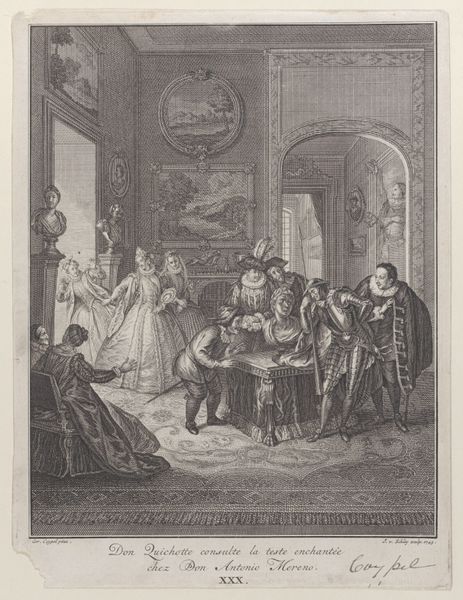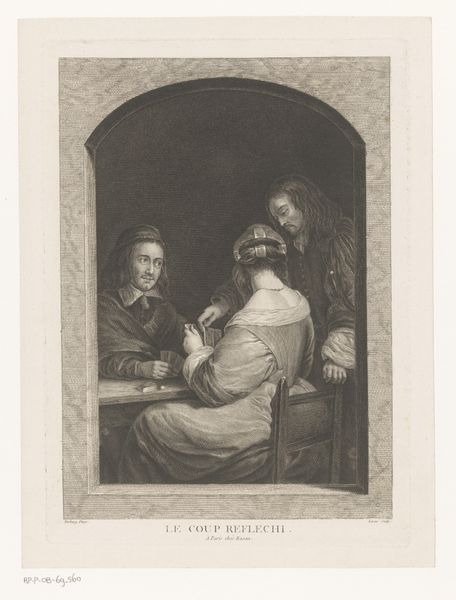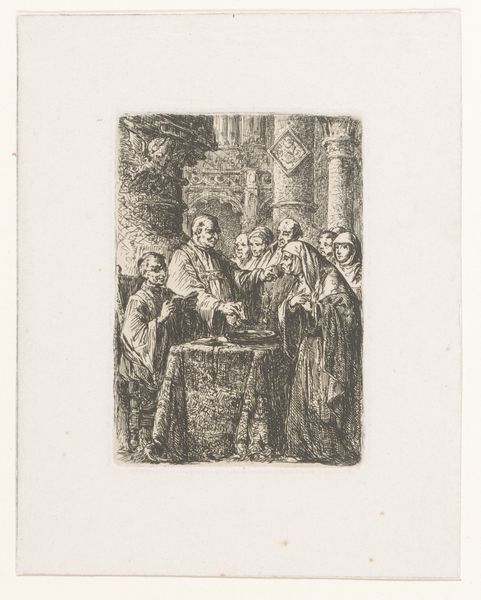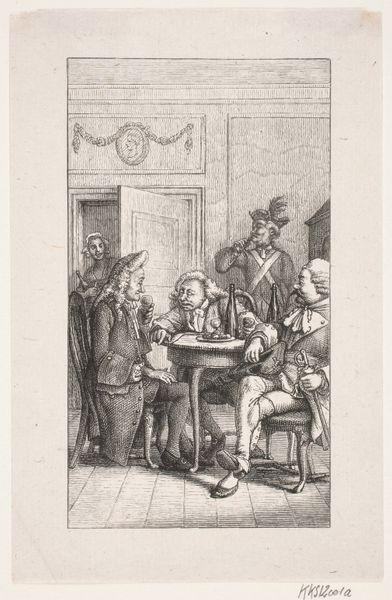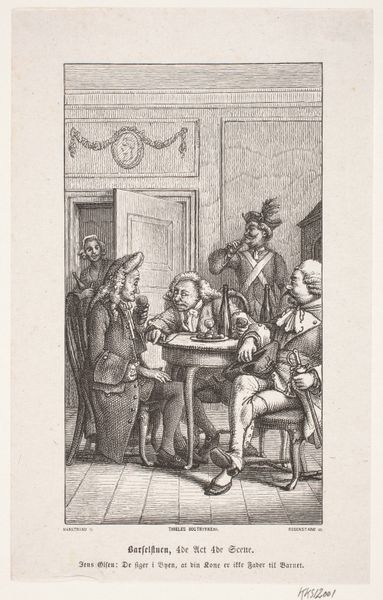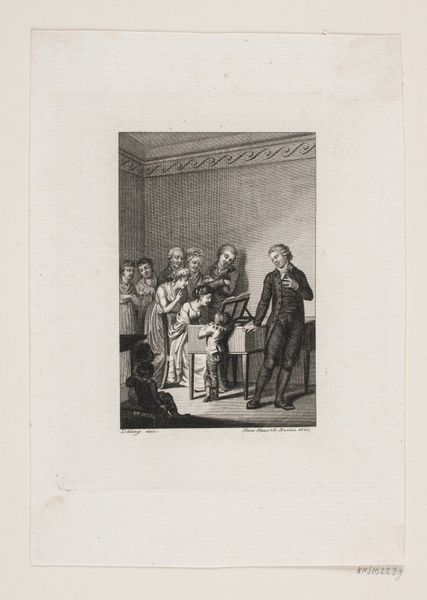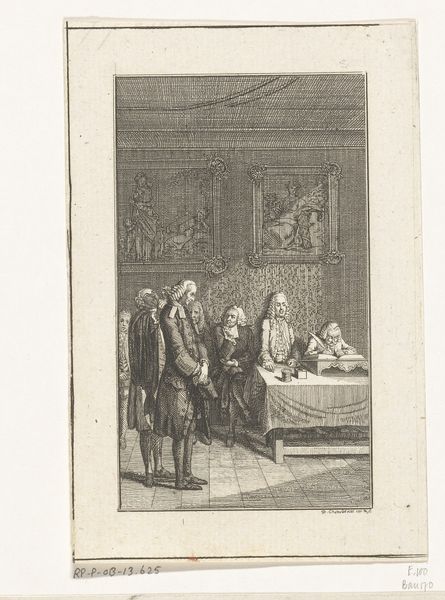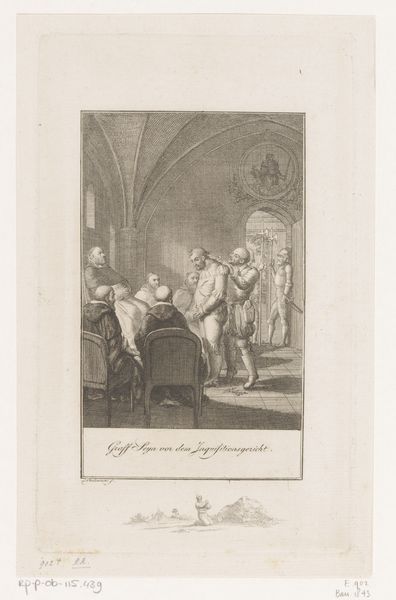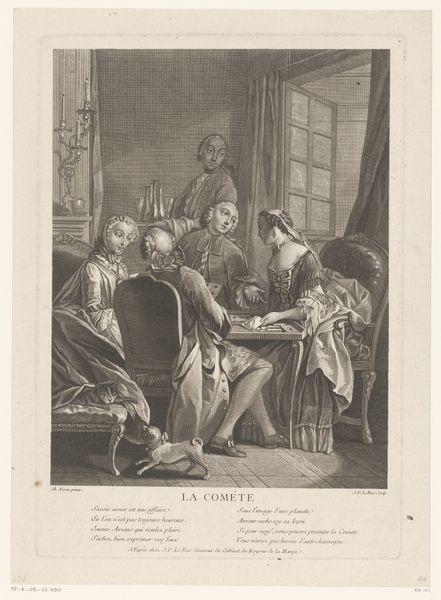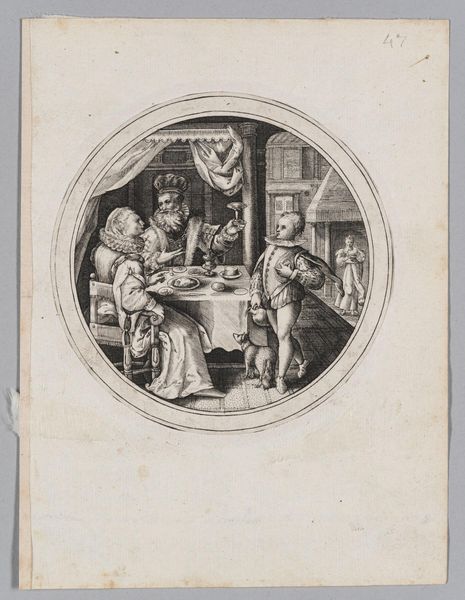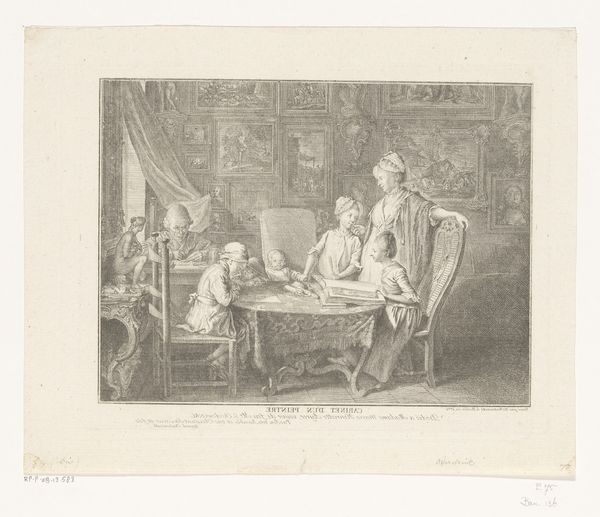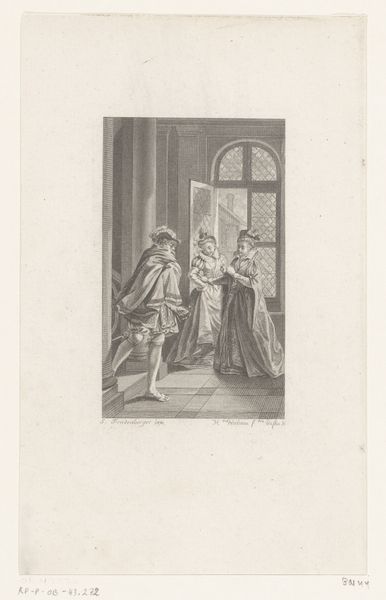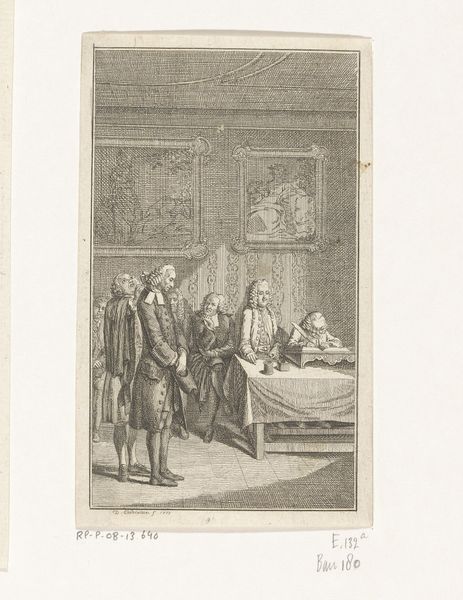
Portret van Peter Paul Rubens, Philip Rubens, Justus Lipsius en Johannes Woverius 1775 - 1829
0:00
0:00
Dimensions: height 268 mm, width 234 mm
Copyright: Rijks Museum: Open Domain
Antoine Alexandre Morel created this print, "Portret van Peter Paul Rubens, Philip Rubens, Justus Lipsius en Johannes Woverius," sometime between 1765 and 1829. At its heart, this image celebrates intellectual discourse, symbolized by the gathering of these learned men around a table laden with books. The books themselves become potent symbols of knowledge and wisdom. Consider the bust of a classical philosopher, possibly Seneca, overlooking the scene. This echoes the Renaissance’s reverence for classical antiquity and its values. Recall how portraiture, from ancient Roman busts to Renaissance paintings, often served to immortalize and idealize figures. It visually connects them to virtues and intellectual prowess. The act of gathering, too, has echoes in earlier art. The Last Supper, for example, or gatherings of philosophers in ancient frescoes, all emphasize the importance of communal learning and shared ideas. The emotional tenor of the image evokes a sense of quiet contemplation and respect. These motifs—the book, the gathering, and the classical figure—form a rich, cyclical pattern throughout art history, each time resurfacing with new, nuanced meanings.
Comments
No comments
Be the first to comment and join the conversation on the ultimate creative platform.
